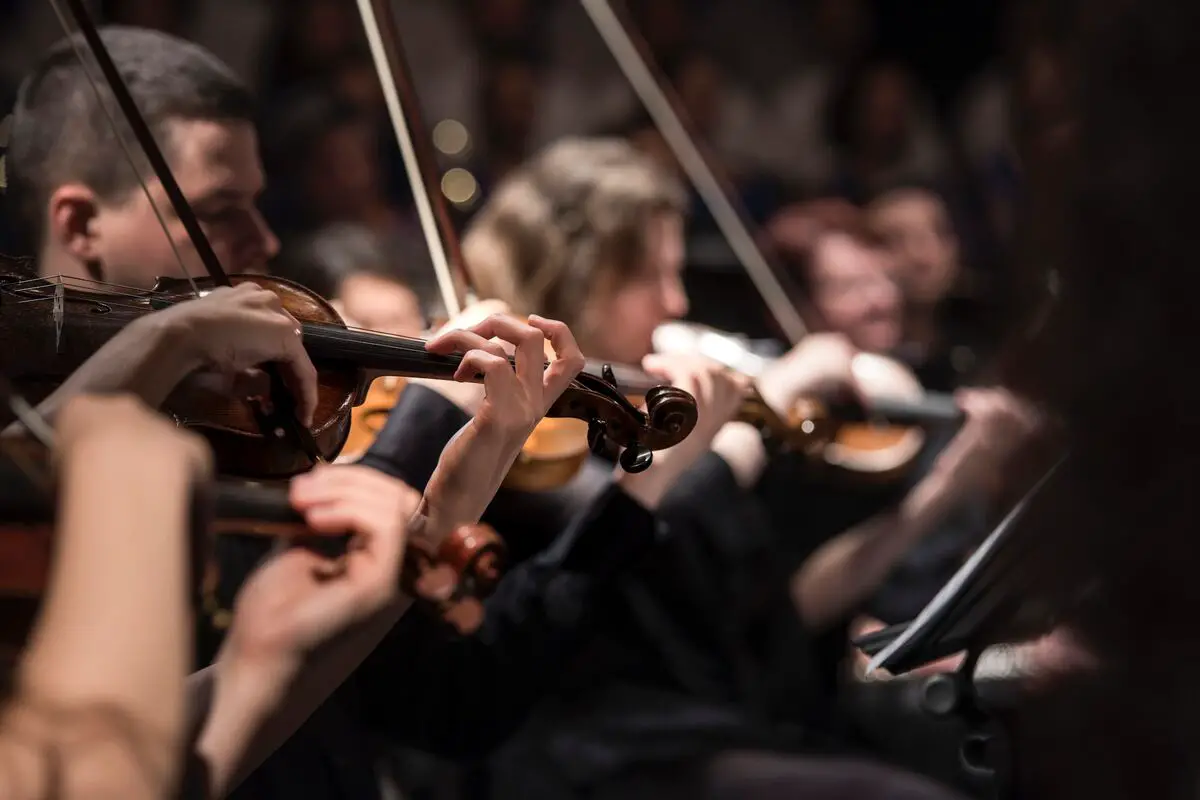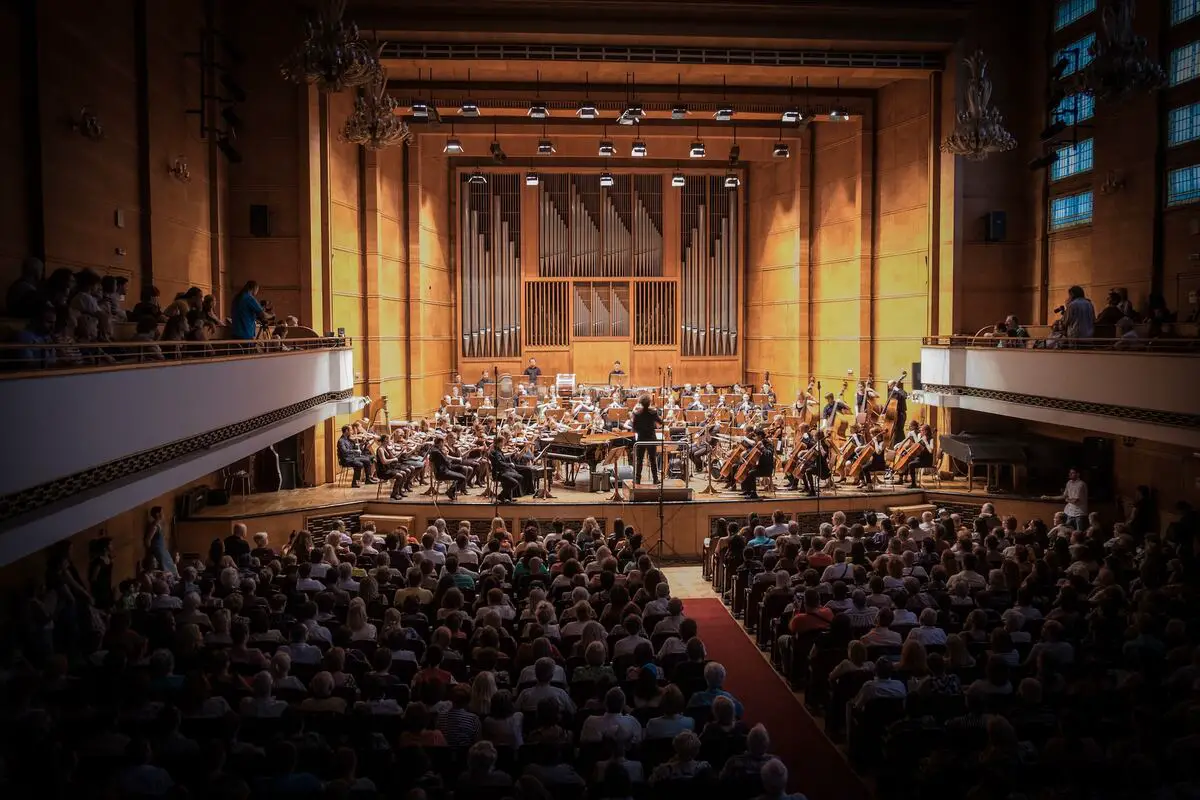Have you ever wondered what makes a symphony so captivating and enthralling? From the grandeur of Beethoven’s Symphony No. 5 to the emotional depth of Tchaikovsky’s Symphony No. 6, symphonies have a way of transporting us to a different realm. But what exactly is a symphony, and how has it evolved over the centuries? Let’s dive into the world of symphonies to find out.
What is a symphony? A symphony is an extended musical form written for an orchestra. It is a genre that combines instrumental music with the power to evoke a wide range of emotions.
What is a symphony?
A symphony is an extended musical form written for an orchestra. It is a popular genre among musicians and audiences and is often the main event of classical music concerts worldwide. Symphonies typically consist of instrumental music, although some include vocal choruses. They are known for their complexity, depth, and ability to evoke many emotions.

Symphonies are traditionally structured into four movements, one of which often uses sonata form. However, modern composers have pushed the boundaries of symphonies, creating works with varying structures and lengths. From the Baroque era to the present day, symphonies have evolved significantly, reflecting the changing musical landscapes of different periods.
AKAI Professional MPK Mini MK3

AKAI Professional MPK Mini MK3
What are the characteristics of a symphony?
Over the centuries, the characteristics of a symphony have evolved, but certain defining points remain consistent:
- Large ensemble: In most cases, symphonies feature orchestral instruments like violin, viola, cello, contrabass, trumpet, trombone, horn, flute, clarinet, oboe, and various percussion. Contemporary symphonies may feature less standard instruments, such as keyboards and electric guitars.
- Long-form: Some symphonies are a few minutes in length, but most exceed 20 minutes. Mahler’s Symphony No. 3, though, is an example of a symphony that can take more than an hour to perform.
- Multiple movements: Nearly all symphonies use multiple movements with various tempos, keys, and tonalities. The Classical symphony form typically begins with an allegro rondo or sonata in 4/4 time, with a slow second movement, a 3/4 minuet third movement, and another allegro rondo or sonata as its fourth movement. More contemporary symphonies are less structured.
How has the symphony evolved?
The roots of the modern symphony can be traced back to the Baroque tradition of the Italian overture, also known as an opera sinfonia. Alessandro Scarlatti popularized overtures as instrumental introductions to vocal operas, and these overtures continue to influence classical music and musical theater.
During the Classical era, composers like Wolfgang Amadeus Mozart, Franz Joseph Haydn, and Ludwig van Beethoven significantly contributed to the development of symphonies. The Classical symphony form typically consists of an allegro rondo or sonata in 4/4 time as the first movement, followed by a slow second movement, a 3/4 minuet third movement, and another allegro rondo or sonata as the fourth movement. Other notable Classical symphonists include J.C. Bach, C.P.E. Bach, and Giovanni Battista Sammartini.

In the Romantic era, symphonies became vessels for emotion and storytelling. Composers like Beethoven, Hector Berlioz, Johannes Brahms, Felix Mendelssohn, and Piotr Ilyich Tchaikovsky infused their works with drama and created programmatic symphonies where the music portrays specific characters and story points.
Moving into the twentieth and twenty-first centuries, symphonies have become more diverse and experimental. Modern composers no longer adhere strictly to the four-movement structure and often include elements of minimalism, atonality, and other avant-garde techniques. Symphonies can range from one movement to more than 20, and their duration can vary from a few minutes to over an hour.
What is the significance of symphonies in the world of classical music?
These works have become integral to the classical music canon, influencing and inspiring generations of musicians and composers.
Symphonies hold immense significance in the world of classical music. They are considered the pinnacle of orchestral composition, showcasing the skill and creativity of composers throughout history. Symphonies are the main event of classical music concerts worldwide, drawing audiences with their grandeur, emotional depth, and ability to transport listeners to new realms of musical experience. These works have become integral to the classical music canon, influencing and inspiring generations of musicians and composers.
What are examples of famous symphonies?
These symphonies represent milestones in the history of classical music, showcasing the diversity and creativity of composers across different time periods.
- Symphony, Wotquenne 177, Helm 653 in E minor (1756) by Carl Philipp Emanuel Bach
- Symphony No. 40 in G minor, K. 550 (1788) by Wolfgang Amadeus Mozart
- Symphony No. 5 in C minor (1808) by Ludwig van Beethoven
- Symphony No. 3 in A minor “Scottish Symphony” (1842) by Felix Mendelssohn
- Symphony No. 6 in B minor “Pathetique” (1893) by Piotr Ilyich Tchaikovsky
- Symphony in C (1940) by Igor Stravinsky
- Symphony No. 3 (1995) by Krzysztof Penderecki
If you want even more great tips and information, check out the video below.
Frequently Asked Questions (FAQ)
Do you still have questions about symphonies in music? Below are some of the most commonly asked questions.
Are symphonies only performed by orchestras?
Yes, symphonies are predominantly performed by orchestras. Orchestras consist of a wide range of instrumentalists, including string, wind, brass, and percussion sections, working together to create the grand and dynamic sound that symphonies are known for.
How long does a typical symphony last?
The length of a symphony can vary, but most symphonies exceed 20 minutes in duration, with some lasting over an hour. The extended length allows composers to develop musical ideas, explore different themes and motifs, and take listeners on a captivating musical journey.
Can symphonies be experimental or incorporate non-traditional elements?
Absolutely! Modern symphonies have pushed the boundaries of traditional structure and style. Composers in the twentieth and twenty-first centuries have embraced experimentation, incorporating atonal, minimalist, and other avant-garde elements into their symphonic compositions.
Conclusion
And with that symphonic crescendo, we reach the end of our melodic journey through the captivating world of symphonies. From the soaring heights of Beethoven to the emotional depths of Tchaikovsky, symphonies continue to enthrall and inspire audiences worldwide. Remember, in the symphony of life, embrace the crescendos and find harmony in the pauses.
So, did I cover everything you wanted to know? Let me know in the comments section below. I read and reply to every comment. If you found this article helpful, share it with a friend, and check out my full blog for more tips and tricks on classical music. Thanks for reading, and may your life be filled with beautiful symphonies!
Key Takeaways
This article covered the fascinating world of symphonies. Here are some key takeaways:
- Symphonies are extended musical works written for orchestras.
- They have evolved from the Baroque era to the present day, embracing new forms and styles.
- Symphonies possess characteristics such as a large ensemble, long-form duration, and multiple movements.
- They hold immense significance in the classical music repertoire and offer emotional and artistic expression.
- Symphonies have a rich history and influence on the world of music, inviting listeners on a captivating musical journey.















